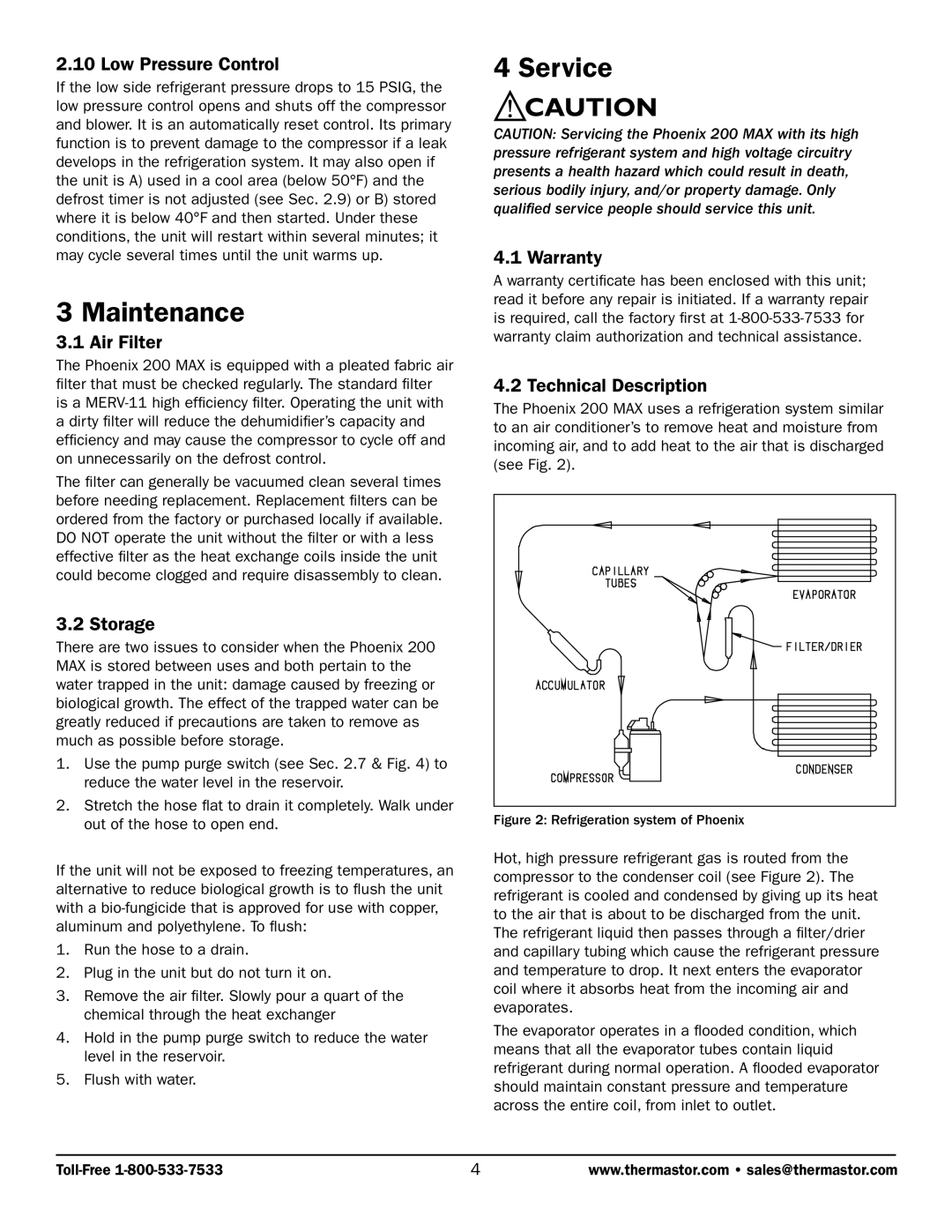200 MAX specifications
The Therma-Stor Products Group 200 MAX is a state-of-the-art dehumidification solution designed to meet the rigorous demands of both residential and commercial environments. Renowned for its efficiency and durability, the 200 MAX stands out among its competitors with a suite of advanced technologies and features.At the heart of the Therma-Stor 200 MAX is its powerful rotary compressor, engineered to provide maximum moisture removal capability while maintaining low energy consumption. This innovative compressor enables the unit to operate efficiently even in challenging conditions, making it an ideal choice for flood restoration and general dehumidification projects.
One of the standout characteristics of the 200 MAX is its impressive moisture removal rate. Capable of extracting substantial amounts of water from the air, this unit is suitable for spaces up to 6,000 square feet, effectively handling high humidity levels in basements, crawl spaces, and large commercial areas. Its ability to quickly create a drier environment helps prevent damage caused by mold and mildew, making it an essential tool for maintaining indoor air quality.
The 200 MAX incorporates a user-friendly digital control panel that allows for precise humidity and temperature adjustments. This intuitive interface not only simplifies operation but also provides real-time feedback on the unit's performance. Additionally, the integrated hygrometer helps monitor relative humidity levels, ensuring optimal performance and settings are maintained.
For ease of use, the Therma-Stor 200 MAX features a built-in pump, enabling continuous drainage of collected water without the need for manual intervention. This feature is particularly beneficial in areas where water disposal is challenging, as it eliminates the inconvenience of frequently emptying a collection tank.
Robust construction materials enhance the durability and longevity of the 200 MAX, making it suitable for demanding environments. Its compact and portable design, coupled with heavy-duty wheels, facilitates easy transportation and positioning in any space.
Moreover, the 200 MAX is designed with energy efficiency in mind, contributing to reduced operational costs. Its environmentally-friendly refrigerants align with modern energy standards, underscoring Therma-Stor's commitment to sustainable practices.
In summary, the Therma-Stor Products Group 200 MAX combines cutting-edge technology with practical features to deliver a superior dehumidification solution. Its powerful moisture removal, user-friendly controls, and energy-efficient design make it a leading choice for those seeking reliable performance in managing humidity levels. Whether for home use or commercial applications, the 200 MAX promises to create healthier, safer indoor environments.

